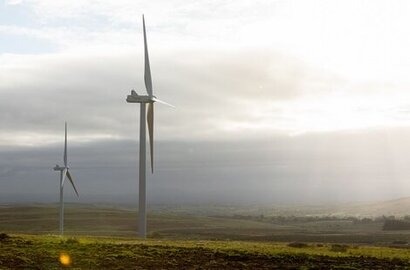
The proposed scheme comprises 12 turbines with an overall installed capacity of around 50 MW, in addition to an energy storage facility which will help maximise the generation capability and efficiency of the site.
Onshore wind, together with large scale solar, is now the cheapest form of electricity generation and can be deployed quickly. It also increases energy security by reducing reliance on imports and builds our resilience to price fluctuations caused by fossil fuels. This makes developments like Carnbuck not just good for the environment but also for the consumer.
“The urgent need to reduce carbon emissions is ever pressing and wind, as a free and inexhaustible resource, has a crucial role to play” said David McVeigh, Development Project Manager at RES. “Recent analysis has shown that Northern Ireland consumers saved £500 million because wind farms produced 42 percent of our electricity last year. While the UN’s latest climate report highlights the environmental devastation caused by the ongoing climate crisis, it clearly states we have the technology at our disposal to tackle the worst effects of global warming, which is why we need to act fast to utilise our expertise and take advantage of the deliverability of suitable wind farm developments.”
Following public consultations held in March 2022 and January 2023, RES has reviewed the feedback received from the community and key consultees, together with the findings from the environmental and technical studies, in order to inform the detailed design of the proposed wind farm. The site layout has been carefully designed to minimise impacts as far as possible, including a shared site entrance and some infrastructure with the existing Gruig Wind Farm, which will reduce the environmental footprint and traffic movements associated with wind farm construction.
If approved, not only will Carnbuck Wind Farm help deliver on Northern Ireland’s Path to Net Zero aims, it will create skilled, sustainable jobs and help to drive a cleaner and more resilient economy. The project will provide a vital economic boost by delivering £3.3 million potential inward investment into the local area in the form of jobs, employment, and use of local services during the development, construction and first year of operation alone. It’s estimated that the development would involve a capital spend of around £65 million, of which nearly £30 million will be realised within the Northern Ireland economy.
In Northern Ireland, RES has developed and/or constructed 22 onshore wind farms equating to nearly 380 MW and currently operates over 150 MW of wind projects.
For additional information:

